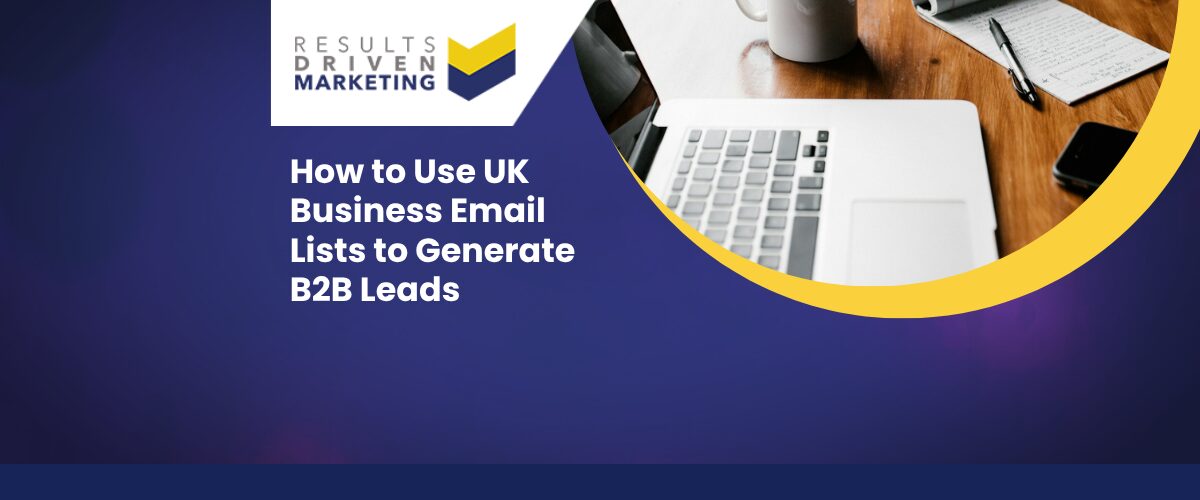
Email Marketing Workflows
Ever found yourself pondering over the secret sauce to marketing success? Well, let’s spill the beans: it’s all about Email Marketing Workflows. These nifty sequences are more than just emails; they’re your ticket to a streamlined, efficient, and downright effective way to engage with your audience.
Table of contents:
Definition and Importance
So, what’s the big deal with Email Marketing Workflows? Imagine having a trusty assistant who knows exactly when to reach out to your customers, with what message, and doesn’t miss a beat. That’s your workflow.
It’s a series of automated emails that trigger based on specific actions your customers take, or don’t take. It’s like having a conversation where you’re always saying the right thing at the right time – priceless, right?
The Evolution of Email Marketing and Automation
Rewind a couple of decades, and email marketing was like casting a net in the ocean and hoping for the best. Fast forward to today, and it’s more like precision fishing with sonar technology.
Email Marketing Workflows have evolved from mass, one-size-fits-all campaigns to hyper-targeted, personalized sequences that speak directly to the individual needs and behaviors of your audience. It’s a game-changer, folks.
Understanding Email Workflows
Diving deeper into the world of Email Marketing Workflows, let’s get to grips with what they really are.
What is an Email Workflow?
An Email Workflow is your marketing plan on autopilot. It’s a series of emails that automatically go out based on timelines or user actions.
Think of it as a domino effect; one action triggers the next, creating a seamless flow of communication that’s both relevant and timely. It’s smart, it’s efficient, and it’s working even when you’re not.
The Mechanics of Email Marketing Workflows
The cogs and wheels of Email Marketing Workflows are made up of triggers, conditions, and actions. A trigger might be a new subscription or a cart abandonment, and the condition could be if they’ve clicked on a previous email.
The action? That’s the tailored email they receive as a result. It’s a well-oiled machine that ensures your message hits home every time.
Types of Email Marketing Workflows
Navigating the world of email marketing workflows is akin to selecting the perfect outfit for the right occasion – it’s all about the context. Let’s unpack the wardrobe of workflows available to you:
Welcome Series:
This is your “hello” handshake in email form. A sequence designed to greet new subscribers and introduce them to your brand ethos and community.
Educational/Content Series
Consider this the book club invite of emails. It’s a series that informs and educates your audience on topics relevant to their interests and your industry.
Re-engagement Series:
The equivalent of a “long time no see” coffee catch-up. These emails aim to rekindle the flame with subscribers who haven’t engaged with your brand in a while.
Transactional Emails:
The “receipts and records” of email workflows. These are triggered by purchases or transactions and include order confirmations, invoices, and shipping updates.
Abandoned Cart Series:
Picture this as the gentle nudge after someone leaves their shopping cart in the aisle. These emails remind customers of what they’ve left behind and encourage them to complete their purchase.
Upsell/Cross-Sell Series:
The personal shopper of emails, offering tailored suggestions for additional products based on past purchases.
Milestone Emails:
Celebrate the anniversaries, birthdays, and significant milestones of your customers with these congratulatory messages.
Review Requests:
After a customer has had enough time to experience your product, this workflow politely asks for their feedback.
Event-Based Series:
The party invitation of emails. These are centered around an upcoming event, webinar, or conference, providing all the details and building excitement.
Replenishment Emails:
The friendly reminder to restock on products that are likely running low, based on previous purchase behavior.
Each type of workflow serves a unique purpose in your email marketing strategy, helping to tailor the experience for your audience and guide them through their journey with your brand. Just like a well-organized closet, having a variety of workflows at your disposal ensures you’re prepared for any occasion that may arise.
Table of contents:
Building Effective Email Workflows
Alright, let’s roll up our sleeves and get down to business. Building an email workflow isn’t rocket science, but it does take a bit of know-how and a sprinkle of creativity.
How to Create a Successful Email Workflow
First things first, you’ve got to map out your customer’s journey. From the ‘hello’ to the ‘thank you for your purchase’, every step is a chance to connect. Here’s a quick rundown:
- Identify the trigger: What’s the starting gun for your workflow? A sign-up, a download, a special occasion?
- Segment your audience: Not everyone is the same, right? Group your contacts based on their actions or preferences.
- Craft your content: Write emails that resonate, inform, and engage. Remember, it’s a conversation, not a monologue.
- Decide on the sequence: Timing is everything. Space out your emails to avoid overwhelm but keep the momentum.
- Test and tweak: Send, analyze, refine, repeat. It’s all about learning what works and what wows.
Tools and Platforms for Email Workflow Automation
Now, you wouldn’t bake a cake without an oven, would you? The same goes for email workflows. You need the right tools.
There’s a whole arsenal out there, from Mailchimp to HubSpot, each with its own set of bells and whistles. Look for features like:
- Intuitive drag-and-drop builders: For those of us who aren’t coding wizards.
- Detailed analytics: Because what’s the point if you can’t measure success?
- Integration capabilities: Make sure it plays nice with your other tools and platforms.
Best Practices in Email Workflow Creation
Let’s talk best practices. These are the golden rules that can make or break your email workflow:
- Keep it relevant: Personalize, personalize, personalize. It’s the mantra of email marketing.
- Be clear and concise: Your subscribers are busy folks. Get to the point, and make it good.
- Mobile-friendly is non-negotiable: If it doesn’t look good on a smartphone, it doesn’t look good, period.
- Consistency is key: Branding should be on point across all emails for instant recognition.
Advantages of Using Email Marketing Workflows
Now, why should you even bother with email workflows? Let me count the ways…
Enhancing Customer Experience Through Email Workflows
Imagine walking into a store where the staff knows your name, your style, and exactly what you’re looking for. That’s the VIP treatment email workflows offer.
They make every customer feel like the guest of honor by delivering hyper-personalized content that hits the sweet spot every time.
Streamlining Marketing Efforts with Automated Workflows
Efficiency is the name of the game. Automated workflows mean you’re not chained to your desk trying to remember who needs what email.
Set it up, let it run, and watch as your marketing machine hums along, freeing you up to focus on the big picture.
What are the advantages of Using Email Marketing Workflows?
The perks? Oh, there are plenty:
- Increased engagement: Right message, right time, right person – it’s a recipe for engagement.
- Better conversion rates: Tailored content nudges subscribers gently down the funnel.
- Insights and analytics: Learn about your audience with every click, open, and conversion.
- Time-saving: Once it’s set up, it’s good to go, giving you back hours in your day.
Disadvantages of Using Email Marketing Workflows
Let’s not beat around the bush—while email marketing workflows are pretty stellar, they’re not without their hiccups. It’s only fair we chat about the flip side, right?
Common Challenges and Pitfalls of Email Workflows
Even the best-laid plans can go awry, and email workflows are no exception. Here’s the lowdown on some common snags:
- Over-automation can feel impersonal: Sometimes, you can get a tad too trigger-happy with automation, and your emails might start to feel a bit robotic.
- Complexity can lead to errors: The more intricate your workflows, the higher the chance something might slip through the cracks—like sending a winter coat promo to someone in the tropics.
- Maintenance can be time-consuming: Keeping your workflows up-to-date is crucial, but boy, can it eat into your time.
What are the disadvantages of Using Email Marketing Workflows?
So, what’s the nitty-gritty on the downsides? Here’s the scoop:
- Set up can be daunting: Getting started can feel like you’re scaling a mountain.
- Costs can add up: Those fancy features and integrations? They come with a price tag.
- Risk of email fatigue: Bombard your subscribers with too many emails, and they might just hit that unsubscribe button.
Strategic Implementation of Email Workflows
Now, just because there are a few bumps in the road doesn’t mean you should ditch the journey altogether. It’s all about smart implementation.
Is Using an Email Marketing Workflow a good idea?
In a word: absolutely. With the right strategy, email marketing workflows can be a game-changer. They’re like having a super-efficient assistant who’s always on the ball, helping you nurture leads and keep customers engaged without breaking a sweat.
What are the key considerations when Using Email Marketing Workflows?
Before you dive in, keep these pointers in mind:
- Know your audience: Like, really know them. What do they want to hear, and when do they want to hear it?
- Quality over quantity: It’s not about how many emails you send; it’s about sending the right emails.
- Stay compliant: Keep it above board with privacy laws and regulations, or you could end up in hot water.
Measuring the Impact and Success of Email Workflows
What’s the point if you can’t measure success? Keep an eye on metrics like open rates, click-through rates, and conversion rates. These numbers will tell you if you’re hitting the mark or if it’s time to go back to the drawing board.
Remember, a successful email workflow is a well-oiled machine that keeps your audience engaged and your business booming.
Alternatives to Using Email Marketing Workflows
So, you’re curious about what else is out there in the vast ocean of marketing automation? Let’s cast a wide net and see what we can catch.
Other Marketing Automation Strategies
Email marketing workflows are just one fish in the sea. There’s a whole ecosystem of automation strategies that can complement or even replace them:
- Social media automation: Keep your socials buzzing without being glued to your screen.
- SMS campaigns: Get up close and personal with text messages that pop up right in your customer’s hand.
- Chatbots: These little helpers can chat away with customers while you’re off doing… well, whatever you want!
What are the alternatives to Using Email Marketing Workflows?
If email workflows aren’t your jam, or you’re just looking to mix things up, consider these options:
- Behavioural targeting: Tailor your website content in real-time based on visitor behavior.
- Programmatic advertising: Use algorithms to buy and place ads more efficiently.
- Account-based marketing: Flip the funnel and tailor your efforts to specific high-value accounts.
Integrating Email Workflows with Other Marketing Channels
Don’t put all your eggs in one basket. Email workflows love good company, so why not pair them with:
- Social media retargeting: Catch those almost-customers with targeted social ads.
- Direct mail: Old school? Maybe. Effective when paired with digital efforts? Absolutely.
- Webinars and live events: Use email to build buzz and follow up post-event.
Email Workflow Templates and Examples
Templates and examples can be lifesavers, especially when you’re just dipping your toes into the email marketing pool. Let’s dive into a few:
Welcome Email Workflows
Roll out the red carpet with a welcome email series that makes a stellar first impression. Think of it as a friendly handshake, but in the inbox.
Lead Nurturing Email Workflows
Keep those leads warm with a drip-feed of content that’s like a cozy blanket of information, guiding them gently towards a sale.
Post-Purchase Email Workflows
The sale’s just the beginning. A post-purchase workflow is your chance to turn a one-time buyer into a lifelong fan.
FAQs
Got questions? We’ve got answers. Let’s tackle some of the most head-scratching queries about email marketing workflows.
How do Email Marketing Workflows Integrate with CRM Systems?
It’s like a match made in heaven. Your CRM holds the data; your email workflow uses it to send targeted, personalized messages. Together, they’re a dynamic duo.
Can Email Marketing Workflows Help with Lead Scoring?
Absolutely. By tracking interactions within your emails, you can score leads based on their engagement level. It’s like having a built-in interest-o-meter.
What Role Does Content Play in Email Marketing Workflows?
Content is the bread and butter of your emails. It’s what keeps people reading and what drives them to act. Without compelling content, your workflow could fall flat.
How to Personalise Email Workflows for Different Audiences?
Segmentation is your best friend here. Break down your audience into groups and tailor your emails to speak their language. It’s like having a different conversation with each customer.
How Often Should Email Marketing Workflows be Updated?
Keep them fresh! Regular audits ensure your workflows stay relevant and effective. It’s like giving your car a tune-up to keep it running smoothly.
How to Ensure Compliance with Email Marketing Laws in Workflows?
Stay informed and stay compliant. Laws like GDPR and CAN-SPAM set the rules of the road for email marketing, so make sure your workflows follow suit. It’s not just good practice; it’s good business.
Who are we?
Dedicated to lead generation, Results Driven Marketing provides myriad services SMEs can trust to deliver results.
Our marketing lists are guaranteed accurate to industry high standards, and GDPR compliant and our experience team means that if you are looking to buy data, they make them totally bespoke and highly relevant whether you are looking for email lists, direct mailing lists or telemarketing lists.
Our email marketing software is highly rated. Responder provides the automation tools you need to put your marketing on autopilot.
We also supply email marketing solutions with our email marketing platform.
Call us today on 0191 406 6399 to discuss your specific needs.
Results Driven Marketing
info@rdmarketing.co.uk
0191 406 6399





